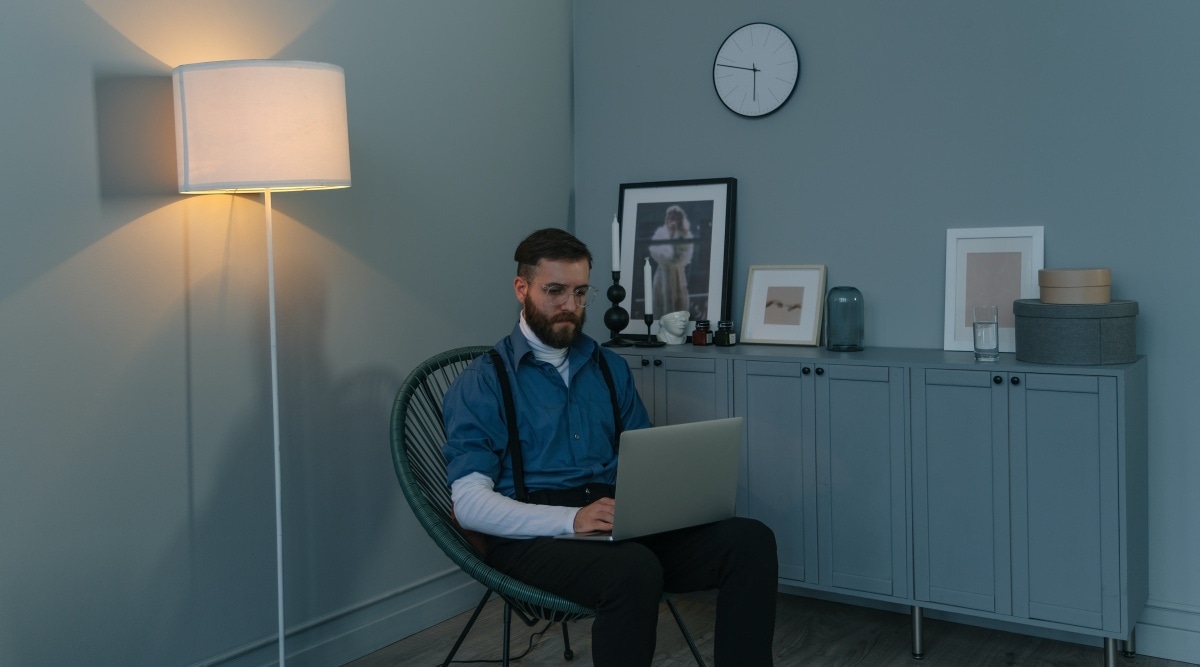Computer vision syndrome Know the effects of increased screen time on eye health
Undoubtedly, there has been an unprecedented jump in the screen time that we have all engaged in ever since the pandemic has broken out. Whether it is for educational purposes, or for entertainment and leisure or for work, a full-fledged digital lifestyle has increasingly come to define us. Indeed, as part of this lifestyle change, work-from-home has become a more permanent feature of our everyday routine.
Work-from-home has an eye health cost
"But, do we realise that the increased adoption of work-from-home routine has a cost element involved in terms of our eye health. As we spend more and more time on digital screens including laptops, mobile phones, tablets, e-readers and even television, our eyes have an disproportionately increased exposure time to these screens fraught with considerable adverse consequences," said Dr Tushar Grover, Medical Director, Vision Eye Centre, New Delhi.
 Reduce your exposure time to screens. (Photo: Pexels)
Reduce your exposure time to screens. (Photo: Pexels) Symptoms
The increased screen time and the resultant eye problems can be gauged through a range of symptoms. These could be in the form of "eye strain, headaches, blurred vision or double vision, dry eyes or even neck and shoulder pain. Sometimes, it can even lead to disturbance in sleep patterns and difficulties in concentration," the expert said.
Computer Vision Syndrome, the big eye problem
He added that excessive screen time can also lead to 'Computer Vision Syndrome' or 'Digital Eye Strain'. Apart from the movement of our eyes, the focusing and refocusing on a computer or other digital screens requires additional efforts on the part of the eye muscles and the vision system. "If we consider the glare, the contrast and the flicker of the screen, it becomes even more strenuous and uncomfortable for our eyes. Also, while we are engrossed with our screens, we tend to blink less which leads to dry eyes with related consequences. People touching 40, particularly, have to exert more since their natural lenses become less flexible," he explained.
Those wearing eyewear also have problems
While people with unaddressed or under-addressed vision issues will have more problems for obvious reasons, those wearing some eyewear such as eyeglasses and lenses also need to be equally careful. "Screen use, particularly at home, is often associated with improper posture and improper home lighting. The viewer is often forced to bend his head, not just aggravating discomfort to eyes but also causing back and neck pain," he said.
 Posture snd lighting should be given importance while working from home. (Photo: Pexels)
Posture snd lighting should be given importance while working from home. (Photo: Pexels) What should one do?
Of course, reducing or 'right-sizing' the screen time is the first step that one has to consider. Second, placing the computer or other screen in sufficiently lit space must become a priority. Third, adequate distance -- preferably at an arm's length -- and at appropriate viewing angle between the individual and the screen must be maintained. Fourth, glasses and lenses filtering blue rays and with UV protection should be taken recourse to. "Fifth and very importantly, one must observe the 20-20-20 rule meaning that every 20 minutes, a person using screen should look about 20 feet away for at least twenty seconds. This would give the eyes much-needed rest on a regular basis," he suggested.
Therefore, while work-from-home and the consequent increased screen time has many advantages, there are downsides too with respect to our eye health. A study reports that nearly 23% of Indian population had suffered some level of weakening eyesight during the pandemic-driven increased homestays. As such, while we can't do away with our screens completely, we must exercise caution. Moderation is the key here.
? For more lifestyle news, follow us on Instagram | Twitter | Facebook and don't miss out on the latest updates!
Belum ada Komentar untuk "Computer vision syndrome Know the effects of increased screen time on eye health"
Posting Komentar